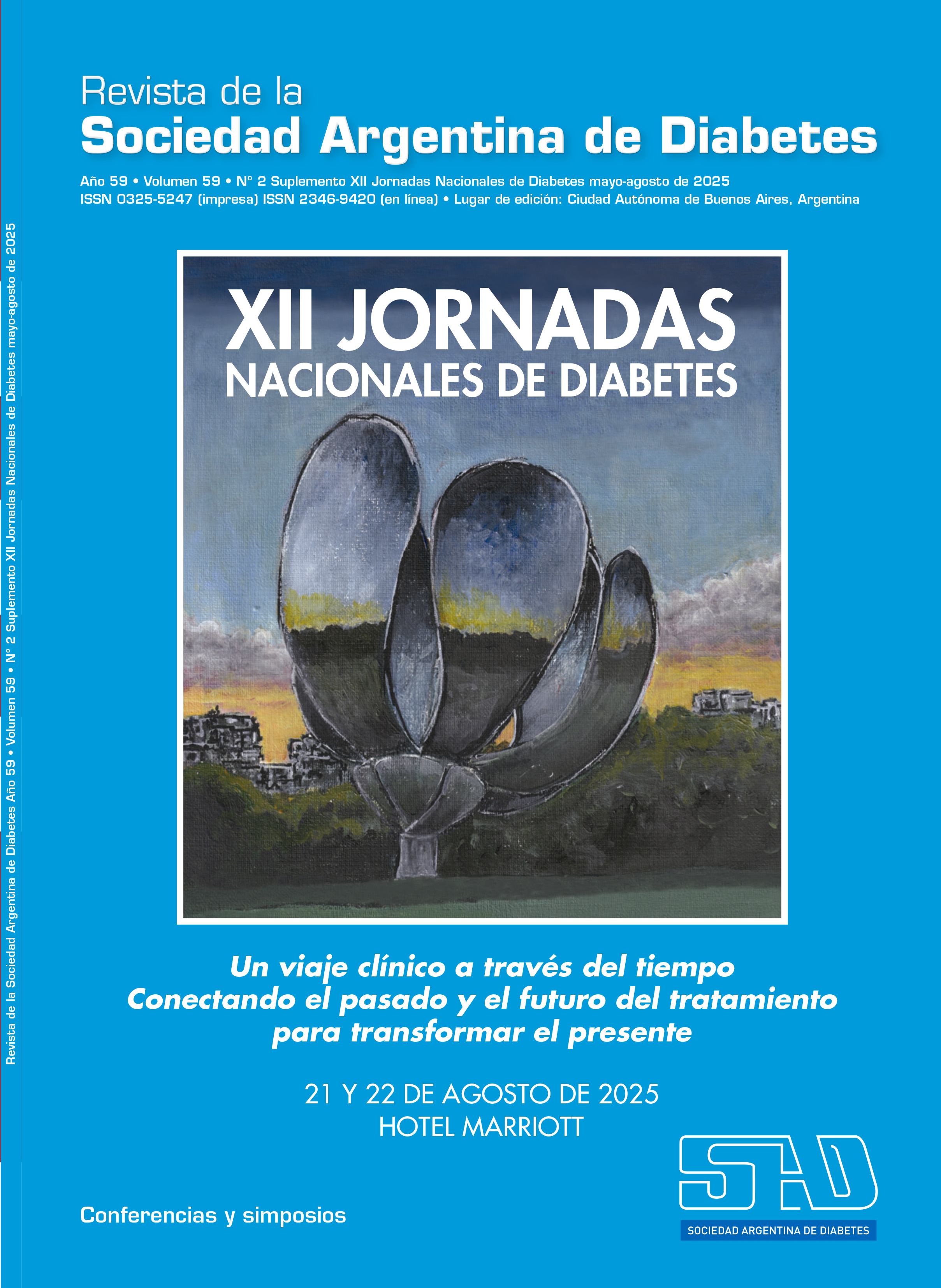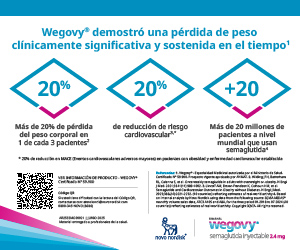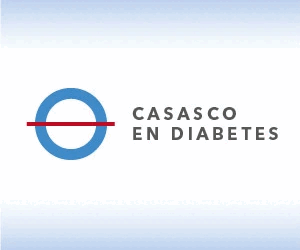Influence of obesity on the progression of complications
DOI:
https://doi.org/10.47196/diab.v59i2Sup.1236Keywords:
obesity, diabetes, complicationsAbstract
Obesity is a modifiable risk factor that is not only involved in the etiopathogenesis of type 2 diabetes mellitus (T2DM) but also in the development of its macro- and microvascular complications, suggesting the complex interplay of mechanisms related to dysfunctional adipose tissue.
Obesity interferes with normal metabolic and vascular functions through insulin resistance, chronic inflammation, oxidative stress, and adipokine imbalance. These processes damage blood vessels and organs, aggravating microvascular complications such as retinopathy, nephropathy, and neuropathy, as well as macrovascular problems such as cardiovascular disease. Central (visceral) obesity is particularly detrimental, with a strong correlation with these complications.
There is growing evidence about the role of obesity and overweight in T1DM. On the one hand, weight gain can be a complication of insulin treatment, but on the other, it reveals a significant pathophysiological impact at various stages of the disease. Intensive insulin treatment may be a factor linked to the development of obesity after diagnosis and counteract the impact of good metabolic control on the development of complications by generating insulin resistance and compounding the effects of metabolic alterations associated with obesity.
Strategies aimed at reducing visceral adipose tissue and targeting the inflammatory and metabolic pathways that link adipose tissue with target organ damage may contribute to reducing the risk and progression of diabetic complications.
References
I. Chobot A, Górowska-Kowolik K, Sokołowska M, et al. Obesity and diabetes. Not only a simple link between two epidemics. Diabetes Metab Res Rev 2018; 34: e3042. doi: 10.1002/dmrr.3042.
II. Merger SR, Kerner W, Stadler M, et al; DPV Initiative; German BMBF Competence Network Diabetes mellitus. Prevalence and comorbidities of double diabetes. Diabetes Res Clin Pract 2016; 119: 48-56. doi: 10.1016/j.diabres.2016.06.003.
III. Ciezki S, Kurpiewska E, Bossowski A, et al. Multi-faceted influence of obesity on type 1 diabetes in children. From dsease pathogenesis to complications. Front Endocrinol (Lausanne) 2022;13:890833. Doi: 10.3389/fendo.2022.890833.
Downloads
Published
Issue
Section
License
Copyright (c) 2025 on behalf of the authors. Reproduction rights: Argentine Diabetes Society

This work is licensed under a Creative Commons Attribution-NonCommercial-NoDerivatives 4.0 International License.
Dirección Nacional de Derecho de Autor, Exp. N° 5.333.129. Instituto Nacional de la Propiedad Industrial, Marca «Revista de la Sociedad Argentina de Diabetes - Asociación Civil» N° de concesión 2.605.405 y N° de disposición 1.404/13.
La Revista de la SAD está licenciada bajo Licencia Creative Commons Atribución – No Comercial – Sin Obra Derivada 4.0 Internacional.
Por otra parte, la Revista SAD permite que los autores mantengan los derechos de autor sin restricciones.




























